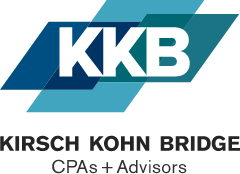Insights
Nonprofits: 4 ratios worth watching
April 6th, 2023/Tax
To control your not-for-profit’s expenses and improve operating efficiency, you need to keep an eye on the numbers. This should come as no surprise. But which measures are important? Which ratios can help you identify how much currently goes toward programming (as opposed to administration), how much you spend on fundraising (compared to funds raised) and how much your nonprofit needs in operating reserves?
Key measures
In general, these four key ratios should be regularly monitored:
1. Percentage spent on program activities. This ratio gives you a good idea of how much of your total budget is used to provide direct services. To calculate this ratio, divide your total program service expenses by total expenses. Higher than 65% is widely considered to be good, and 85% and above is usually excellent.
2. Percentage spent on fundraising. To calculate this number, divide total fundraising expenses by contributions. The standard benchmark for fundraising and admin expenses is 35%.
3. Current ratio. This measure represents your nonprofit’s ability to pay its bills. It provides a snapshot of financial conditions at any given time. To calculate, divide current assets by current liabilities. Generally, this ratio shouldn’t be less than 1:1.
4. Reserve ratio. Is your organization able to sustain programs and services during temporary revenue and expense fluctuations? The key is having sufficient expendable net assets.
To calculate your nonprofit’s reserve ratio, divide expendable net assets (unrestricted and temporarily restricted net assets less net investment in property and equipment and less any nonexpendable components) by one day’s expenses (total annual expenses divided by 365).
For most organizations, this number should be between 90 and 180 days. Base your target on the nature of your operations, your program commitments and the predictability of funding sources.
For example, let’s say you rely on a handful of grantors and large donors to fund programming. If your nonprofit unexpectedly lost one or two of these funding sources, it would probably be in a tight spot. So keep expendable net assets that would cover closer to 180 days’ expenses in reserve.
Evaluate them correctly
Not every nonprofit leader is fluent in accounting. To help ensure you’re looking at the right ratios, evaluating them correctly given your organization’s specific characteristics and making smart decisions based on the numbers, contact us for assistance.
© 2023
For more helpful tax and accounting articles, or to sign up for our newsletter, please visit our KKB Insights page. If you have any questions, please contact us.
TAGS: Tax


